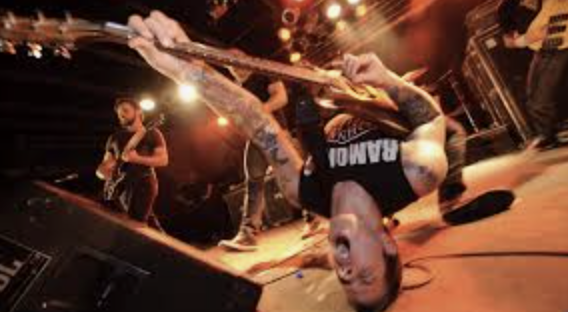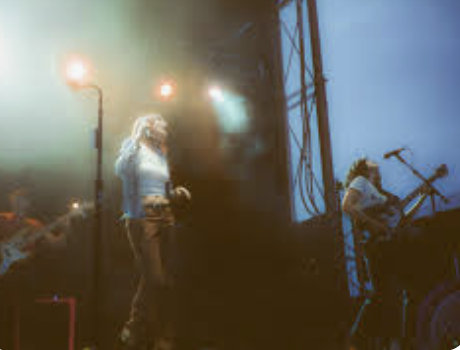- Published on
Evolution of Concert Photography: From Film to Digital and the Impact of Social Media!
Live music photography has evolved significantly over the years, transforming from a niche artistic pursuit into a mainstream form of visual storytelling. The progression from film to digital technology has revolutionized the craft, enabling photographers to capture live performances with unprecedented speed and quality. Social media has further amplified its influence, making concert photography more accessible and widely appreciated. Let’s explore the key milestones in this evolution and the effects of these changes on the field.
The Early Days: Film Photography!
In its early days, concert photography was primarily captured on film, and the limitations of this medium meant that photographers needed to be highly skilled and resourceful. Using film required a keen understanding of light, composition, and timing since there was no way to instantly review shots. Photographers had to rely on experience and intuition, balancing low-light conditions with unpredictable stage movements. Iconic concert photographers like Jim Marshall, who captured classic rock legends such as Jimi Hendrix and The Rolling Stones, became known for their ability to seize fleeting moments on stage, turning them into timeless images.
The process was labour-intensive and costly, involving developing and processing film rolls and printing images in a darkroom. The results, however, were often worth the effort—concert photos from the 1960s and 1970s remain some of the most powerful visual documents of music history. Photographers were often closely embedded with bands and had access to backstage areas, allowing them to create intimate portraits that extended beyond the stage performances. The Digital Revolution
The shift to digital photography in the late 1990s and early 2000s changed concert photography dramatically. With the advent of high-quality digital cameras, photographers could now take hundreds, even thousands, of shots in a single show without worrying about film costs. Digital sensors improved lowlight performance, making it easier to capture sharp images in dimly lit live music venues, a long-standing challenge for film photographers.
This transition allowed for quicker turnarounds, as images could be edited on a laptop right after a show and shared with editors or published online almost immediately. The days of waiting for film to develop were over. Additionally, the ability to review shots on the camera’s screen helped photographers adjust their settings in real-time, significantly increasing the likelihood of getting the perfect shot. Burst shooting modes, faster autofocus, and higher ISO capabilities further enhanced live music photography, opening the door to more creative experimentation.
The Role of Social Media!
Arguably the most significant factor in recent years has been the rise of social media platforms like Instagram, Facebook, and Twitter, just to name same of the social media. These platforms have democratized live music photography, enabling fans and photographers alike to share their work with a global audience. Where once only professional photographers had the means and platform to showcase their work, now anyone with a decent camera or even a smartphone can capture and upload concert moments for thousands or millions to see.
This shift has had both positive and negative effects. On the positive side, social media has given concert photographers a new avenue to promote their work and build personal brands. Photographers can connect directly with fans, bands, and industry insiders, often leading to new opportunities. Social media algorithms that favour visual gig means that concert photographers are more likely to get noticed, and viral posts can quickly elevate a photographer’s career. However, the downside is the saturation of concert images online. The value of professional concert photography has diminished in some cases, as amateur shots flood platforms, making it harder for professionals to stand out. Furthermore, the focus on likes, shares, and followers can sometimes shift attention away from the artistry of photography toward achieving viral status. As well there is another downside and that is, that the photo can be edited to make the female (for example), can end up looking nothing like she looks like on the stage.
Conclusion!
Concert photography has evolved dramatically, from the labour-intensive days of film to the fast-paced world of digital media. The emergence of social media has both expanded the reach of live music photography and altered its commercial landscape. Despite these changes, the core of live music photography remains the same: capturing the energy, emotion, and essence of live performances. As technology continues to evolve, concert photographers will continue to adapt, finding new ways to visually interpret the magic of live music.
The Early Days: Film Photography!
In its early days, concert photography was primarily captured on film, and the limitations of this medium meant that photographers needed to be highly skilled and resourceful. Using film required a keen understanding of light, composition, and timing since there was no way to instantly review shots. Photographers had to rely on experience and intuition, balancing low-light conditions with unpredictable stage movements. Iconic concert photographers like Jim Marshall, who captured classic rock legends such as Jimi Hendrix and The Rolling Stones, became known for their ability to seize fleeting moments on stage, turning them into timeless images.
The process was labour-intensive and costly, involving developing and processing film rolls and printing images in a darkroom. The results, however, were often worth the effort—concert photos from the 1960s and 1970s remain some of the most powerful visual documents of music history. Photographers were often closely embedded with bands and had access to backstage areas, allowing them to create intimate portraits that extended beyond the stage performances. The Digital Revolution
The shift to digital photography in the late 1990s and early 2000s changed concert photography dramatically. With the advent of high-quality digital cameras, photographers could now take hundreds, even thousands, of shots in a single show without worrying about film costs. Digital sensors improved lowlight performance, making it easier to capture sharp images in dimly lit live music venues, a long-standing challenge for film photographers.
This transition allowed for quicker turnarounds, as images could be edited on a laptop right after a show and shared with editors or published online almost immediately. The days of waiting for film to develop were over. Additionally, the ability to review shots on the camera’s screen helped photographers adjust their settings in real-time, significantly increasing the likelihood of getting the perfect shot. Burst shooting modes, faster autofocus, and higher ISO capabilities further enhanced live music photography, opening the door to more creative experimentation.
The Role of Social Media!
Arguably the most significant factor in recent years has been the rise of social media platforms like Instagram, Facebook, and Twitter, just to name same of the social media. These platforms have democratized live music photography, enabling fans and photographers alike to share their work with a global audience. Where once only professional photographers had the means and platform to showcase their work, now anyone with a decent camera or even a smartphone can capture and upload concert moments for thousands or millions to see.
This shift has had both positive and negative effects. On the positive side, social media has given concert photographers a new avenue to promote their work and build personal brands. Photographers can connect directly with fans, bands, and industry insiders, often leading to new opportunities. Social media algorithms that favour visual gig means that concert photographers are more likely to get noticed, and viral posts can quickly elevate a photographer’s career. However, the downside is the saturation of concert images online. The value of professional concert photography has diminished in some cases, as amateur shots flood platforms, making it harder for professionals to stand out. Furthermore, the focus on likes, shares, and followers can sometimes shift attention away from the artistry of photography toward achieving viral status. As well there is another downside and that is, that the photo can be edited to make the female (for example), can end up looking nothing like she looks like on the stage.
Conclusion!
Concert photography has evolved dramatically, from the labour-intensive days of film to the fast-paced world of digital media. The emergence of social media has both expanded the reach of live music photography and altered its commercial landscape. Despite these changes, the core of live music photography remains the same: capturing the energy, emotion, and essence of live performances. As technology continues to evolve, concert photographers will continue to adapt, finding new ways to visually interpret the magic of live music.

